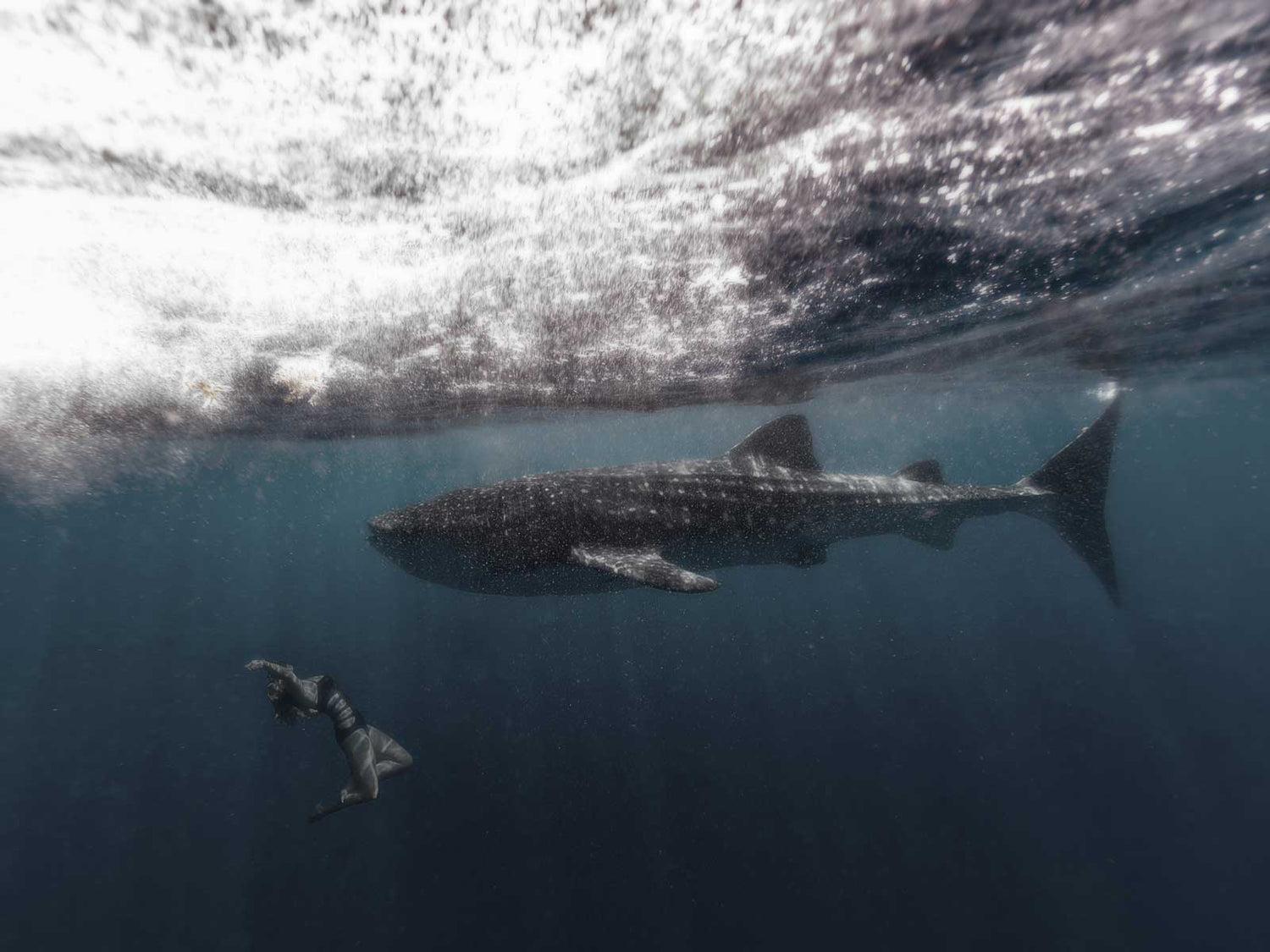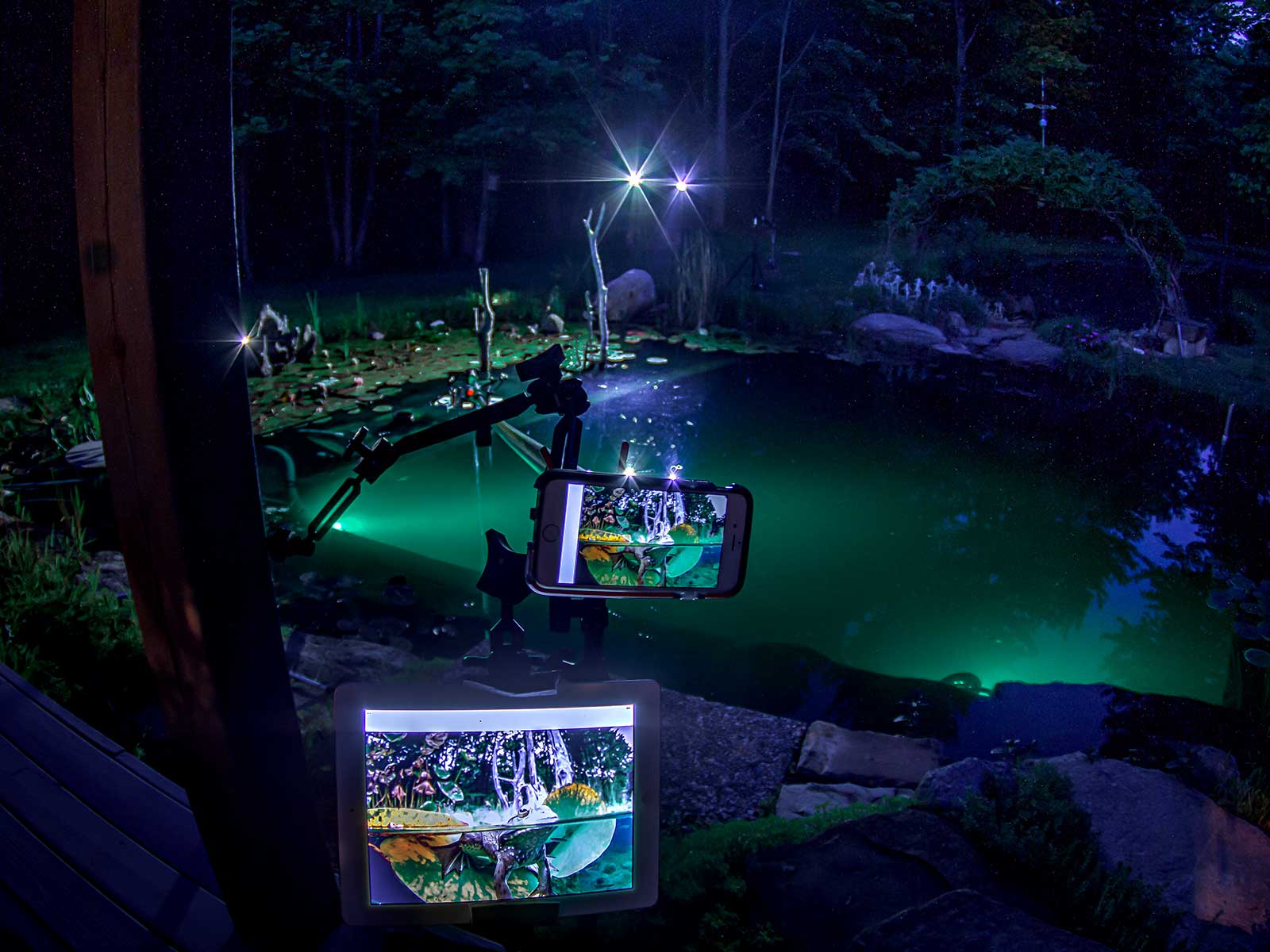By Ambassador Karen Bagley
Photographing wildlife is absolutely one of the most surreal and awe-inspiring photographic opportunities. It is a completely different world. It is unlike photographing people and landscapes, in that you are working with an unpredictable WILD living thing. You cannot tell them to hold still you can’t always guess which direction they will head to next…. Which is where the real beauty lies!
To find whale sharks you will be out in the open ocean and your gear MUST be reliable. You do not want to be face to face with an entire underwater world and worry that your gear will fail you.
Because photographing wildlife can be complicated I have created a few tips to help you on your next journey to photograph whale sharks. Or any underwater creature for that matter.

You may think these giants move at a snail's pace, but they're actually quite quick. Be ready with your camera or you may be photographing only their (albeit still impressive) backsides.
Tip # 1 Be prepared for how quickly wildlife moves underwater.
When thinking of photographing whale sharks in particular, you may think they swim slow. From watching them at a farther distance it may seem that way. I am here to tell you they are actually quite quick. So, you need to go in the water prepared.
At the surface of the water the light can change quickly as does your distance to the subject. Auto white balance and auto ISO can be your friend here and will help you to capture more of the action.
Tip # 2 AUTO IS YOUR FRIEND
Everyone likes to hate on the word AUTO especially if you a photographer. BUT the truth is you will NOT have a lot of time to mess with your settings so there are two things I have on AUTO: White Balance and ISO. When you are swimming at different depths your light changes every inch you move so, your ISO needs to be able to read the environment and adjust correctly.
Tip # 3 ALWAYS check your gear before jumping in.
You would not want a leak while in the powerful ocean. The BIGGEST reason I love Ikelite is the ease of being able to pressure check your housing! It is quick and easy for times like this! PLUS, even if the worst did happen your gear is suspended INSIDE the housing so you are DOUBLE PROTECTED from a leak WOOT!

You will be floating out in open ocean and there may be strong currents. Be aware of your surroundings and always wear the proper safety equipment that correlates with your level of experience in the water. You won't be able to get any photos if you're struggling to keep from drowning.
Tip # 4 DO NOT UNDERESTIMATE the ocean.
Always be mindful of your surroundings and understand that the currents can and almost always are VERY strong. If you are not used to the ocean it is not safe for you to free dive. You will may to wear a lifejacket. Lifejackets will of course hinder you being able to catch shots very deep. BUT hey - to start, being able to photograph them at all is a pretty amazing situation! Work your way up to either diving, or free diving.
Tip # 5 Understand and respect the animals you are photographing.
Whale sharks have poor eyesight and they will get VERY close to you. BE mindful that you do not hit them (especially with your fins) or touch them. Give them the proper respect they deserve.

Whale sharks have poor eyesight and may come quite close to you. Be careful not to touch or kick them, especially when they're swimming underneath your fins.
Tip # 6 Take a private charter out.
If you go out on a boat with 20 other people, it will make getting a shot without 20 sets of legs in the background ALMOST impossible. Plus, you really want TIME with these amazing creatures on your own. You want to appreciate them and document them in their habitat without being disturbed.
Tip # 7 Whale sharks are chasing and eating the plankton.
This absolutely CAN cause a lot of artifacts and small orbs in your shots. There is not a ton you can do about that except to remove it in Adobe® Lightroom or Photoshop. Those small little dots though, are a small price to pay when you have such a magnificent creature you are documenting.
Conclusion
Photographing whale sharks or ANY wild life underwater is such an enormous privilege. To spend even ONE moment with them is an unbelievable experience and without my power house gear from Ikelite, I would never have these images to treasure forever!
If you are planning a trip to go diving with whale sharks any time soon… make sure your gear is right and follow these 7 steps above, and you will come home with amazing art pieces!
HERE IS TO UNDERWATER ART!
And as we say here at Ikelite: "Pics or it didn’t happen” and guess what... I HAVE PICS!
 Ambassador Karen Bagley took her first photography job at the tender age of 16. Since then she's been nationally published, named one of the best maternity photographers in Atlanta, Georgia, and teaches her craft throughout the United States. Karen has a talent for adding a dramatic flair to her unique maternity, newborn, birthing, high school senior, and underwater portraiture photography. Plus she's a master of the business of portrait photography and social media marketing. Karen offers one-on-one mentorship in addition to regular photography seminars. Read more...
Ambassador Karen Bagley took her first photography job at the tender age of 16. Since then she's been nationally published, named one of the best maternity photographers in Atlanta, Georgia, and teaches her craft throughout the United States. Karen has a talent for adding a dramatic flair to her unique maternity, newborn, birthing, high school senior, and underwater portraiture photography. Plus she's a master of the business of portrait photography and social media marketing. Karen offers one-on-one mentorship in addition to regular photography seminars. Read more...
Additional Reading
Whale Shark Photography Underwater Camera Settings
Diving Into Underwater Portraiture Significant Moments 2019 Workshop
Tonga Underwater with Humpback Whales and Grant Thomas
How Underwater Maternity is Different From Topside














